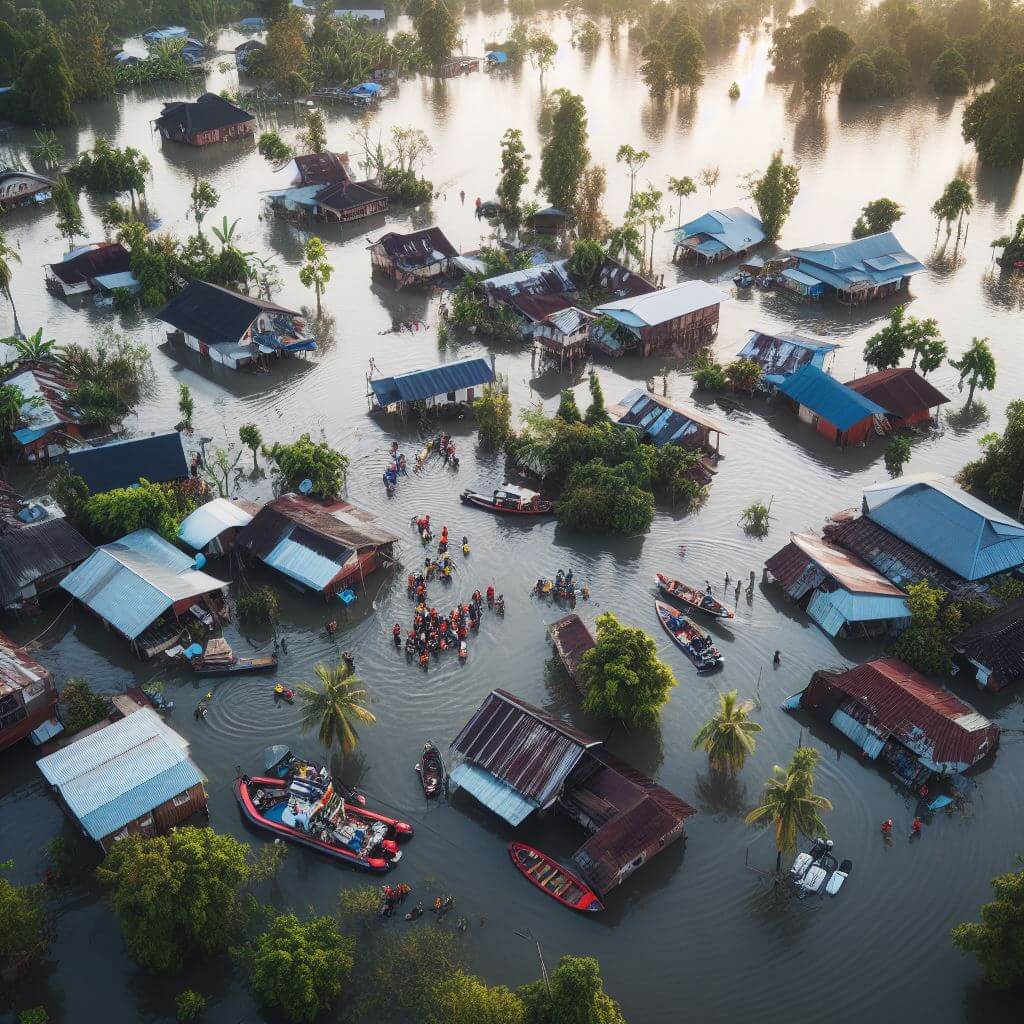Flooding wreaks havoc in the United States, causing communities to bear a staggering financial burden exceeding $32 billion annually. As climate change intensifies, leading to more frequent and unpredictable storms, experts anticipate a further surge in costs. Projections indicate a daunting 26% increase in flood risk by 2050. Compounding this challenge, the unequal distribution of flood risk mitigation measures amplifies the impact on metropolitan areas with higher concentrations of Black, Indigenous, and People of Color (BIPOC) residents.
 Nadja Veigel and her team employ interpretable machine learning to unravel the effectiveness of flood resilience strategies. Constructing their model involved selecting 400 variables encompassing behavioral and socioeconomic factors influencing disaster response and mitigation. These variables spanned individual initiatives at the household level (such as insurance or property enhancements) to overarching policy interventions at the community level.
Nadja Veigel and her team employ interpretable machine learning to unravel the effectiveness of flood resilience strategies. Constructing their model involved selecting 400 variables encompassing behavioral and socioeconomic factors influencing disaster response and mitigation. These variables spanned individual initiatives at the household level (such as insurance or property enhancements) to overarching policy interventions at the community level.
Drawing on open-access data from the National Flood Insurance Program and the U.S. Census Bureau’s American Community Survey, the researchers share their insights in the Earth’s Future journal.
Their analysis revealed a pattern: most households opt for flood insurance only after experiencing severe flood events. Communities with infrequent or minimal exposure to destructive flooding tend to lack insurance coverage. The study also highlighted the challenge of limited awareness of flood history in cities with high resident turnover, undermining mitigation and preparedness efforts. Urban areas also exhibit lower adoption rates of insurance.
Community-level policies like the National Flood Insurance Program’s Community Rating System (CRS) adopt a more proactive stance. The CRS incentivizes insurance adoption by reducing premiums for communities implementing mitigation and floodplain management measures. The authors propose that this system could effectively target underserved and at-risk communities, addressing flood risk inequality.
This research reinforces prior findings that vulnerable groups bear a disproportionate brunt of floods and could benefit from enhanced resilience. The data affirm that top-down approaches, exemplified by the CRS, present proactive flood solutions that tackle structural inequalities in risk. While flood insurance remains a crucial risk management tool, it often functions reactively and offers limited relief without concurrent community-level initiatives.
